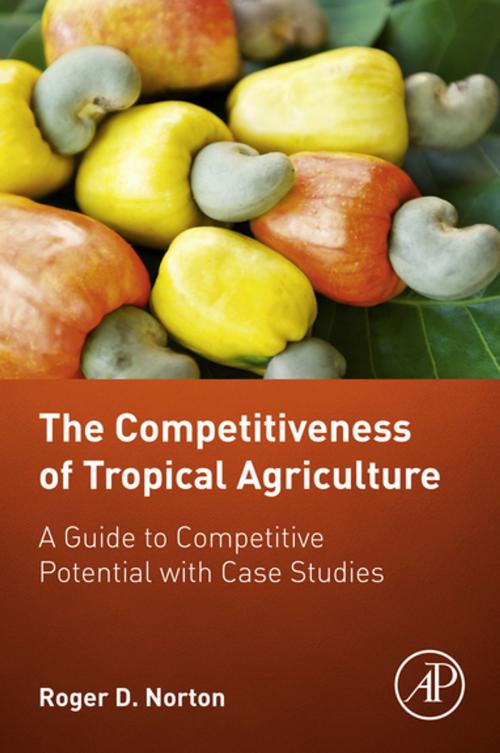The Competitiveness of Tropical Agriculture
A Guide to Competitive Potential with Case Studies
Nonfiction, Science & Nature, Technology, Agriculture & Animal Husbandry, Business & Finance, Industries & Professions, Industries| Author: | Roger D. Norton | ISBN: | 9780128092224 |
| Publisher: | Elsevier Science | Publication: | December 27, 2016 |
| Imprint: | Academic Press | Language: | English |
| Author: | Roger D. Norton |
| ISBN: | 9780128092224 |
| Publisher: | Elsevier Science |
| Publication: | December 27, 2016 |
| Imprint: | Academic Press |
| Language: | English |
The Competitiveness of Tropical Agriculture: A Guide to Competitive Potential with Case Studies describes and synthesizes existing methodologies for evaluating competitiveness in agriculture, introduces extensions and refinements, and provides a novel approach based on a combination of quantitative and qualitative methodologies.
As exports of tropical fruit, nuts, and other high-value crops have been growing very rapidly from developing countries, but often encounter serious obstacles in their value chains, this book demonstrates how national agricultural policy is oftentimes not guided by considerations of inherent competitiveness.
In addition, the book presents case studies that illustrate the application of these approaches using quantitative frameworks. A concluding chapter introduces policy considerations for competitiveness from work in Jordan, Colombia, Estonia, Peru, and elsewhere, also discussing the role of specific policies in raising competitiveness sustainably and its role in reducing rural poverty.
- Presents evaluations of 105 agricultural products, including crops, livestock outputs, aquaculture products, and forestry products
- Explores insights not found in other competitiveness studies, including spatial variation within a country for the same crop, relation to the use of skilled labor, and above all, the role of value chain issues in determining competitiveness
- Includes analysis of results, such as assessing sector-wide effects on employment and income of policies that help align the sector with its competitive advantage
The Competitiveness of Tropical Agriculture: A Guide to Competitive Potential with Case Studies describes and synthesizes existing methodologies for evaluating competitiveness in agriculture, introduces extensions and refinements, and provides a novel approach based on a combination of quantitative and qualitative methodologies.
As exports of tropical fruit, nuts, and other high-value crops have been growing very rapidly from developing countries, but often encounter serious obstacles in their value chains, this book demonstrates how national agricultural policy is oftentimes not guided by considerations of inherent competitiveness.
In addition, the book presents case studies that illustrate the application of these approaches using quantitative frameworks. A concluding chapter introduces policy considerations for competitiveness from work in Jordan, Colombia, Estonia, Peru, and elsewhere, also discussing the role of specific policies in raising competitiveness sustainably and its role in reducing rural poverty.
- Presents evaluations of 105 agricultural products, including crops, livestock outputs, aquaculture products, and forestry products
- Explores insights not found in other competitiveness studies, including spatial variation within a country for the same crop, relation to the use of skilled labor, and above all, the role of value chain issues in determining competitiveness
- Includes analysis of results, such as assessing sector-wide effects on employment and income of policies that help align the sector with its competitive advantage















